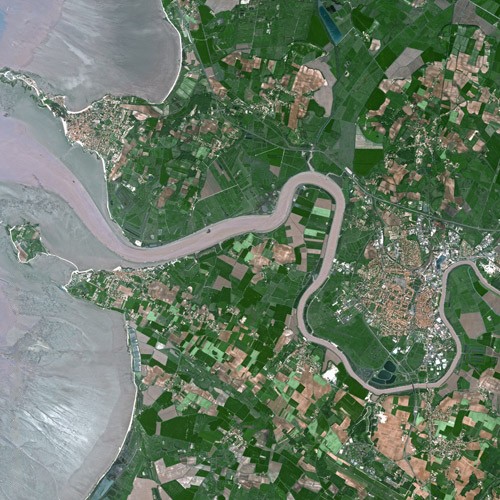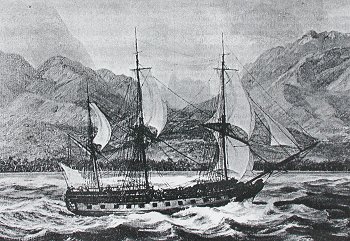|
Preneuse-class Frigate
The ''Preneuse'' class was a type of two 44-gun frigates of the French Navy, designed by Raymond-Antoine Haran and built at Rochefort, Charente-Maritime. * ''Preneuse'' :Builder: Rochefort Dockyard :Ordered: 24 April 1794 :Begun: April 1794 :Launched: 16 February 1795 :Completed: July 1795 :Fate: Ran aground 11 December 1799 on the Île de France (Mauritius) to avoid attack by British warships, which then burnt her. * ''Africaine'' :Builder: Rochefort Rochefort () may refer to: Places France * Rochefort, Charente-Maritime, in the Charente-Maritime department ** Arsenal de Rochefort, a former naval base and dockyard * Rochefort, Savoie in the Savoie department * Rochefort-du-Gard, in the Ga ... Dockyard :Ordered: 1795 :Begun: March 1795 :Launched: 3 January 1798 :Completed: May 1798 :Fate: Captured 19 February 1801 by HMS ''Phoebe'' east of Gibraltar. Recaptured 13 September 1810 by the French but immediately retaken bu HMS ''Boadicea''. Taken to pieces in September 1816 ... [...More Info...] [...Related Items...] OR: [Wikipedia] [Google] [Baidu] |
Rochefort, Charente-Maritime
Rochefort ( oc, Ròchafòrt), unofficially Rochefort-sur-Mer (; oc, Ròchafòrt de Mar, link=no) for disambiguation, is a city and communes of France, commune in Southwestern France, a port on the Charente (river), Charente estuary. It is a Subprefectures in France, subprefecture of the Charente-Maritime Departments of France, department, located in the administrative regions of France, administrative region of Nouvelle-Aquitaine (before 2015: Poitou-Charentes). In 2018, it had a population of 23,583. Geography Rochefort lies on the river Charente (river), Charente, close to its outflow into the Atlantic Ocean. It is about 30 km southeast of La Rochelle. Rochefort station has rail connections to La Rochelle, Nantes and Bordeaux. History In December 1665, Rochefort was chosen by Jean-Baptiste Colbert as a place of "refuge, defence and supply" for the French Navy. The Arsenal de Rochefort served as a naval base and dockyard until it closed in 1926. In September 1757, Rochefor ... [...More Info...] [...Related Items...] OR: [Wikipedia] [Google] [Baidu] |
Virginie-class Frigate
The ''Virginie'' class was a class of ten 40-gun frigates of the French Navy, designed in 1793 by Jacques-Noël Sané. An eleventh vessel (''Zephyr'') begun in 1794 was never completed. * ''Virginie'' :Builder: Brest :Begun: November 1793 :Launched: 26 July 1794 :Completed: December 1794 :Fate: Captured by the British Navy on 22 April 1796, becoming HMS ''Virginie''. * ''Courageuse'' :Builder: Brest :Begun: December 1793 :Launched: early August 1794 :Completed: December 1794 :Fate: Renamed ''Justice'' April 1795. Captured by the British Navy in September 1801, but not added to Royal Navy; instead, handed over to the Turkish Navy. * ''Harmonie'' :Builder: Bordeaux :Begun: May 1794 :Launched: early 1796 :Completed: May 1796 :Fate: Beached and burnt to avoid capture by the British Navy in April 1797. * ''Volontaire'' :Builder: Bordeaux :Begun: September 1794 :Launched: 7 June 1796 :Completed: 1796 :Fate: Captured by the British Navy on 4 March 1806, becoming HMS ''Volontaire ... [...More Info...] [...Related Items...] OR: [Wikipedia] [Google] [Baidu] |
Armide-class Frigate
The ''Armide'' class was a type of 40-gun frigates of the French Navy, designed by Pierre Roland. A highly detailed and accurate model of , one of the units of the class, is on display at Paris naval museum, originally part of the Trianon model collection. Vessels in class * :Builder: Rochefort :Begun: :Launched: 1804 :Completed: :Fate: captured by British Navy The Royal Navy (RN) is the United Kingdom's naval warfare force. Although warships were used by English and Scottish kings from the early medieval period, the first major maritime engagements were fought in the Hundred Years' War against F ..., 1806. * ''Minerve'' :Builder: Rochefort :Begun: :Launched: 1805 :Completed: :Fate: captured by British Navy, 1806. * :Builder: Bordeaux :Begun: :Launched: 1806 :Completed: :Fate: sold for scrap, 1828. * :Builder: Rochefort :Begun: :Launched: 1806 :Completed: :Fate: wrecked, 1811. * :Builder: Cherbourg :Begun: :Launched: 1808 :Completed: :Fate: burnt, 1809. * :Builder: ... [...More Info...] [...Related Items...] OR: [Wikipedia] [Google] [Baidu] |
18-pounder Long Gun
The 18-pounder long gun was an intermediary calibre piece of naval artillery mounted on warships of the Age of Sail. They were used as main guns on the most typical frigates of the early 19th century, on the second deck of third-rate ships of the line, and even on the third deck of late first-rate ships of the line. Usage As the 18-pounder calibre was consistent with both the French and the British calibre systems, it was used in many European navies between the 17th and the 19th century. It was a heavy calibre for early ships of the line, arming, for instance, the main batteries of in 1636. From the late 18th century, the French Navy used the 18-pounder in three capacities: as the main gun on frigates, as the battery on the upper gundeck of two-deckers, and lastly on the top deck of three-deckers. French frigates began carrying the 18-pounder under Louis XV, when the two frigates, originally designed to carry 24-pounders, were equipped with it; at the time, a typical friga ... [...More Info...] [...Related Items...] OR: [Wikipedia] [Google] [Baidu] |
8-pounder Long Gun
The 8-pounder long gun was a light calibre piece of artillery mounted on French warships of the Age of sail. It fired a projectile of eight ''livres'' in weight, equivalent to 8.633 English pounds, or 8 lb 10 oz (the French ''livre'' was 7.916% heavier than the English pound weight). They were used as chase guns or main guns on light ships of the early 19th century, and on the quarterdeck and forecastle of ships of the line. They were similar in design to the Canon de 8 Gribeauval. Usage The 8-pounder was the heaviest of the light guns. Its light weight allowed it to be mounted on the upper gun posts of ships of the line, where the timber of the deck was too light to support larger guns; furthermore, it could be mounted relatively high without jeopardy to the stability of the ship, and could be installed at will at different positions. This made it useful as a chase gun A chase gun (or chaser), usually distinguished as bow chaser and stern chaser, was a cannon mounted in the ... [...More Info...] [...Related Items...] OR: [Wikipedia] [Google] [Baidu] |
Obus
The Obus (French for " cannon shell") was a French automobile manufactured from 1907 until 1908. A voiturette, it was produced by A. Souriau of Montoire Montoire-sur-le-Loir (, literally ''Montoire on the Loir''), commonly known as Montoire, is a commune near Vendôme, in the Loir-et-Cher department in Centre-Val de Loire, France. History Montoire-sur-le-Loir is known as the location where, .... References * David Burgess Wise, ''The New Illustrated Encyclopedia of Automobiles''. Defunct motor vehicle manufacturers of France {{brass-auto-stub ... [...More Info...] [...Related Items...] OR: [Wikipedia] [Google] [Baidu] |
French Frigate Preneuse (1794)
The ''Preneuse'' was a 44-gun frigate of the French Navy, lead ship of her class, designed by Raymond-Antoine Haran and built at Rochefort. She served as a commerce raider at Île de France. Career In 1795, ''Preneuse'' was stationed at Rochefort under Captain Larcher. She was then transferred to the Indian Ocean station, commanded by Rear-Admiral Sercey. In 1796, she was at Mauritius under Captain Ravenel, at Port-Nord-Ouest. In March 1798, under Lhermitte, she ferried ambassadors from Mysore sent by Tippu Sultan to île de France to request help against the British. Near Tellicherry, ''Preneuse'' found two East Indiamen, and at Tellicherry; she attacked and captured both on 20 April, after a one-hour battle. She left the diplomatic mission at Mangalore, and sailed to Batavia. She was soon joined by the 22-gun corvette , which ferried Rear-Admiral Sercey. The squadron sailed to Surabaya, where a settlement was established. A small mutiny broke out when ''Preneuse''s c ... [...More Info...] [...Related Items...] OR: [Wikipedia] [Google] [Baidu] |
French Frigate Africaine (1798)
''Africaine'' was one of two 40-gun s of the French Navy built to a design by Raymond-Antoine Haran. She carried twenty-eight 18-pounder and twelve 8-pounder guns. The British captured her in 1801, only to have the French recapture her in 1810. They abandoned her at sea as she had been demasted and badly damaged, with the result that the British recaptured her the next day. She was broken up in 1816. French service ''Africaine'' was commissioned on 14 September 1799 under ''Capitaine de frégate'' Magendie. In 1800, she sailed to Saint-Domingue. She then sailed from Rochefort with to try to resupply the French forces in Egypt. She was carrying ordnance, stores and 400 soldiers to Napoleon's army in Egypt. At the action of 19 February 1801, , under Captain Robert Barlow, captured ''Africaine'' east of Gibraltar. ''Phoebe'', which had the weather gage, overtook ''Africaine'' and engaged her at close range, despite the French soldiers, who augmented the frigate's guns with th ... [...More Info...] [...Related Items...] OR: [Wikipedia] [Google] [Baidu] |
Frigate
A frigate () is a type of warship. In different eras, the roles and capabilities of ships classified as frigates have varied somewhat. The name frigate in the 17th to early 18th centuries was given to any full-rigged ship built for speed and maneuverability, intended to be used in scouting, escort and patrol roles. The term was applied loosely to ships varying greatly in design. In the second quarter of the 18th century, the 'true frigate' was developed in France. This type of vessel was characterised by possessing only one armed deck, with an unarmed deck below it used for berthing the crew. Late in the 19th century (British and French prototypes were constructed in 1858), armoured frigates were developed as powerful ironclad warships, the term frigate was used because of their single gun deck. Later developments in ironclad ships rendered the frigate designation obsolete and the term fell out of favour. During the Second World War the name 'frigate' was reintroduced to des ... [...More Info...] [...Related Items...] OR: [Wikipedia] [Google] [Baidu] |
Isle De France (Mauritius)
Isle de France () was the name of the Indian Ocean island which is known as Mauritius and its dependent territories between 1715 and 1810, when the area was under the French East India Company and a part of the French colonial empire. Under the French, the island witnessed major changes. The increasing importance of agriculture led to the importation of slaves and the undertaking of vast infrastructural works that transformed Port Louis into a major capital, port, warehousing, and commercial centre. During the Napoleonic Wars, Isle de France became a base from which the French navy, including squadrons under Rear Admiral Linois or Commodore Jacques Hamelin, and corsairs such as Robert Surcouf, organised raids on British merchant ships. The raids (see Battle of Pulo Aura and Mauritius campaign of 1809–1811) continued until 1810 when the British sent a strong expedition to capture the island. The first British attempt, in August 1810, to attack Grand Port resulted in a Frenc ... [...More Info...] [...Related Items...] OR: [Wikipedia] [Google] [Baidu] |
Frigate Classes
A frigate () is a type of warship. In different eras, the roles and capabilities of ships classified as frigates have varied somewhat. The name frigate in the 17th to early 18th centuries was given to any full-rigged ship built for speed and maneuverability, intended to be used in scouting, escort and patrol roles. The term was applied loosely to ships varying greatly in design. In the second quarter of the 18th century, the 'true frigate' was developed in France. This type of vessel was characterised by possessing only one armed deck, with an unarmed deck below it used for berthing the crew. Late in the 19th century (British and French prototypes were constructed in 1858), armoured frigates were developed as powerful ironclad warships, the term frigate was used because of their single gun deck. Later developments in ironclad ships rendered the frigate designation obsolete and the term fell out of favour. During the Second World War the name 'frigate' was reintroduced t ... [...More Info...] [...Related Items...] OR: [Wikipedia] [Google] [Baidu] |




